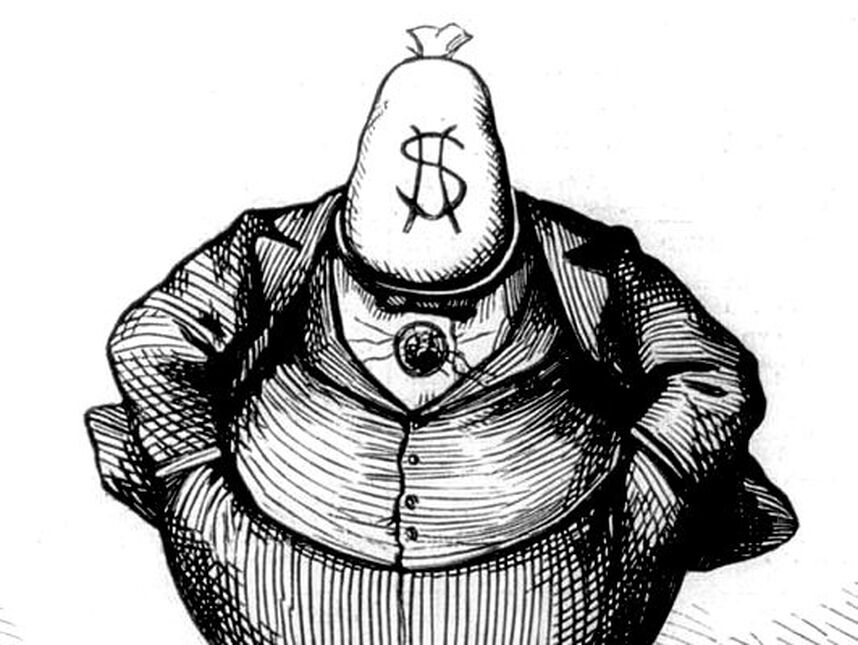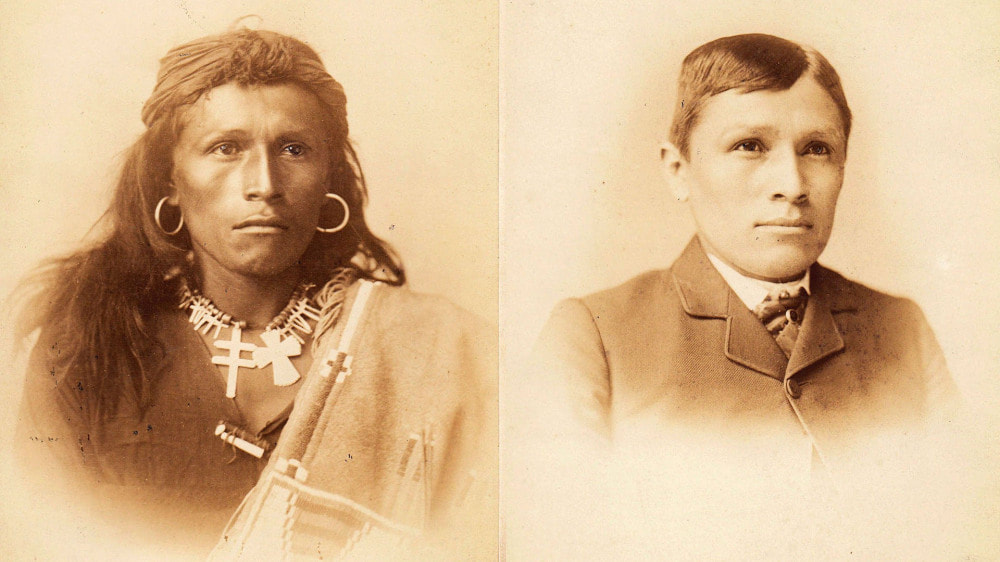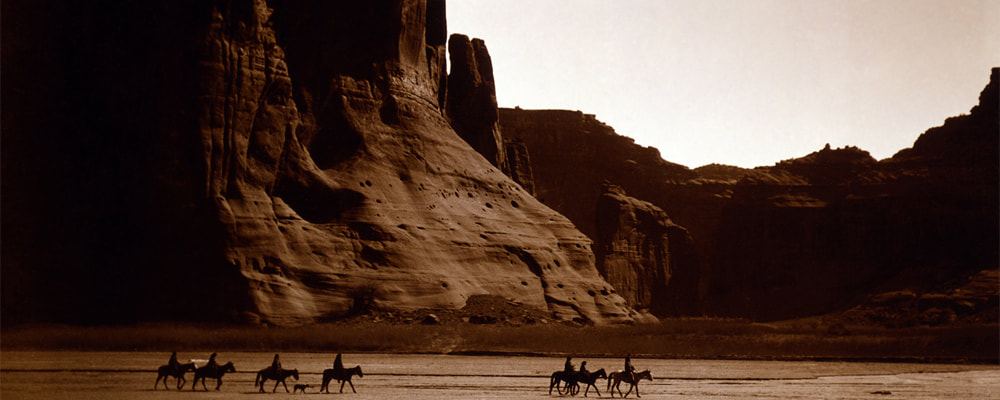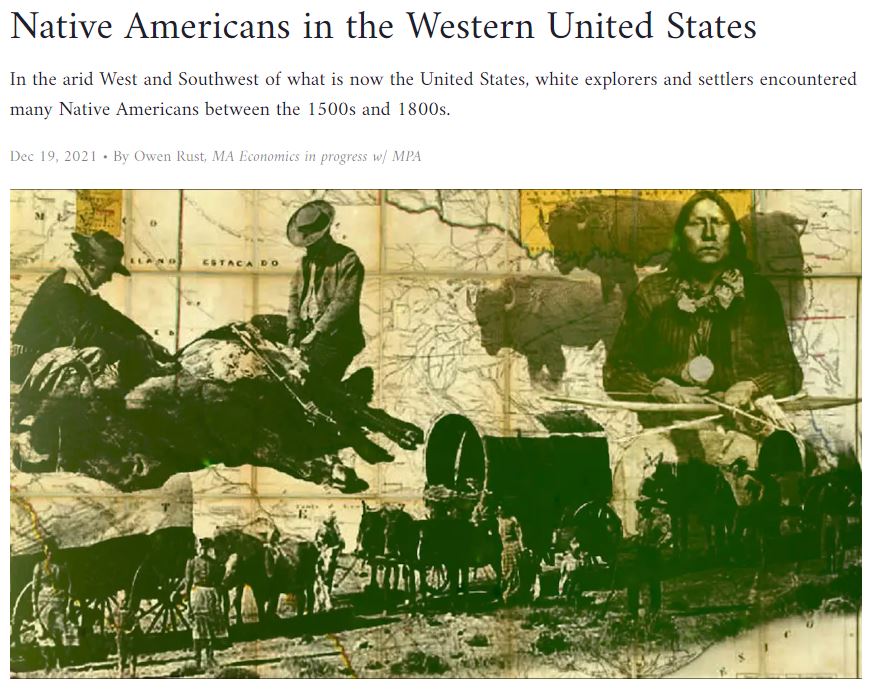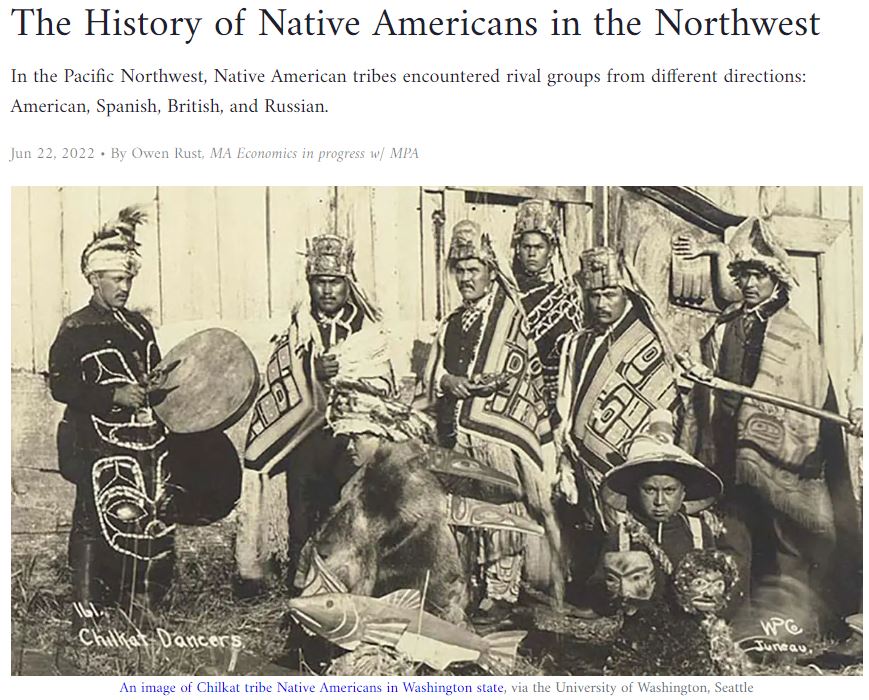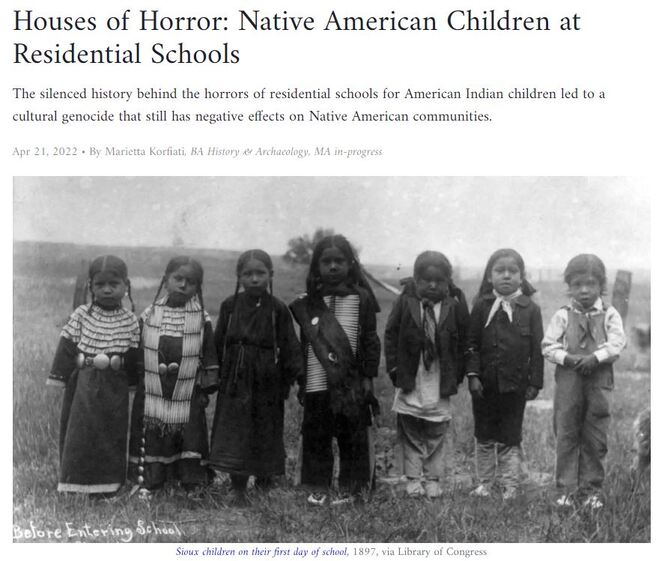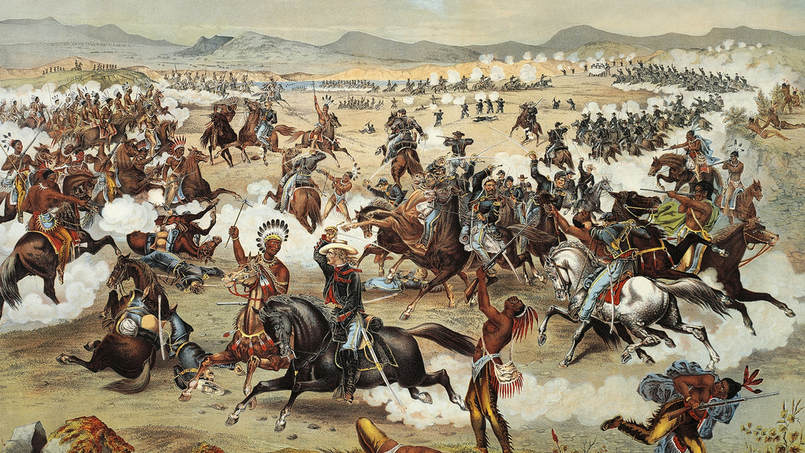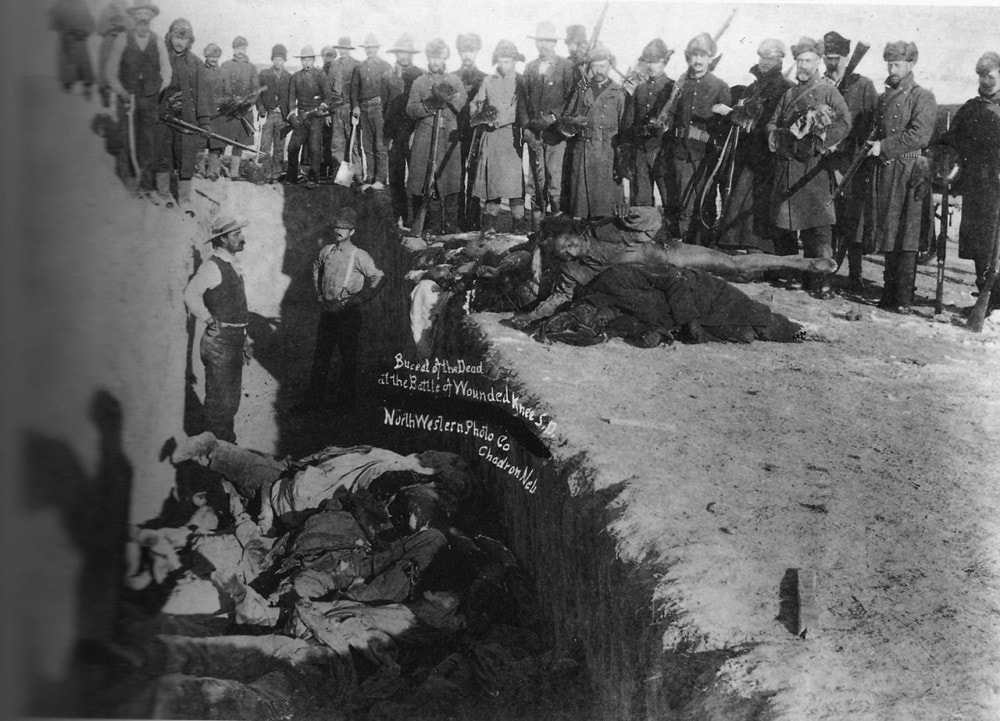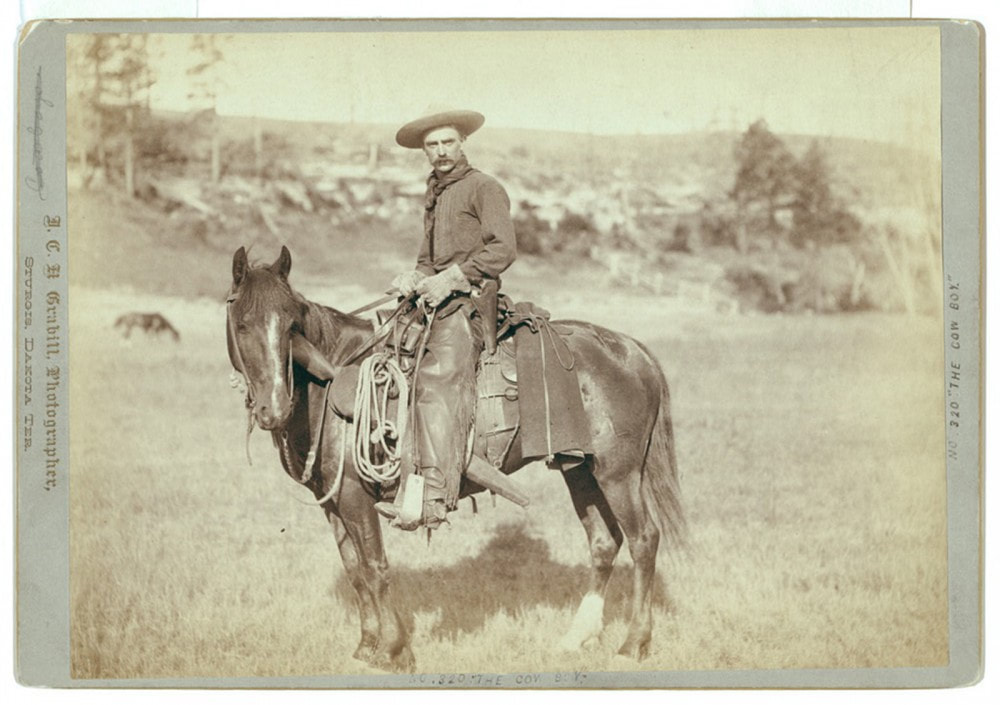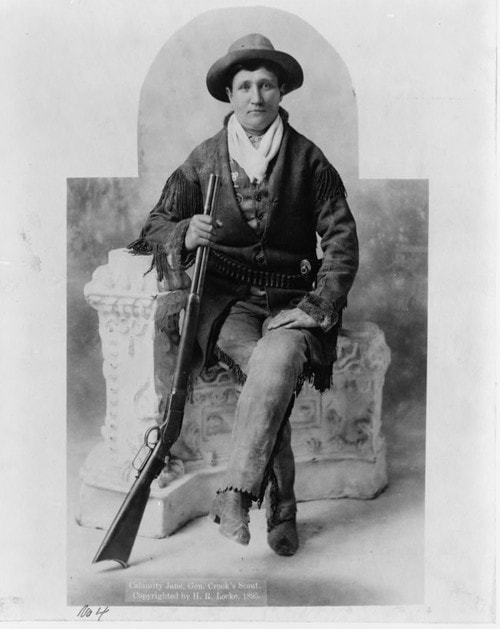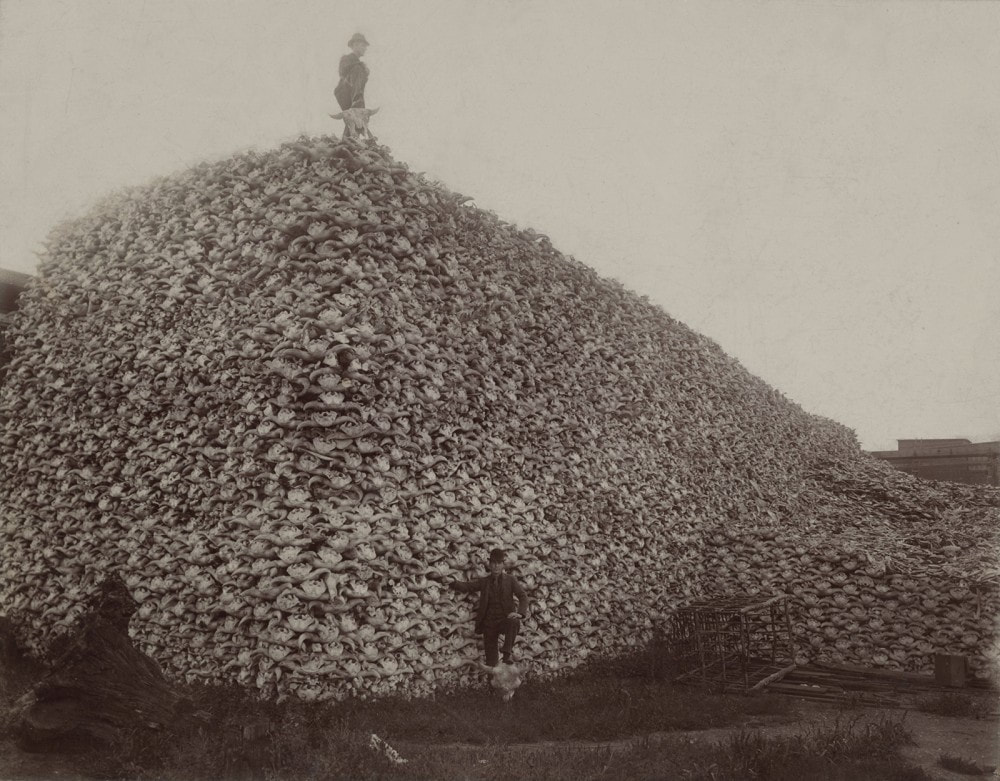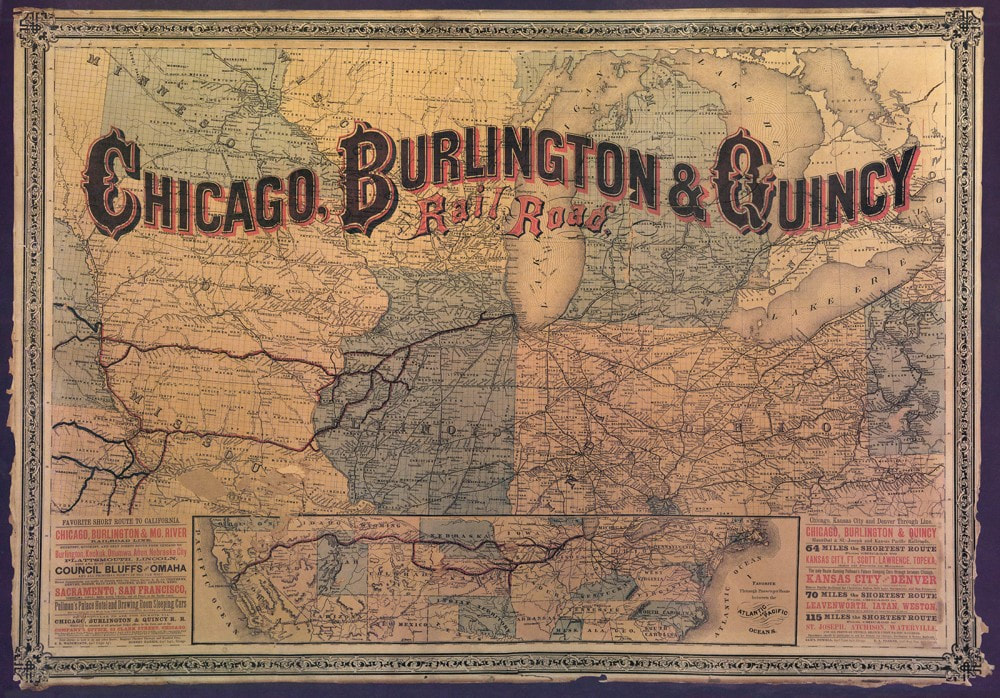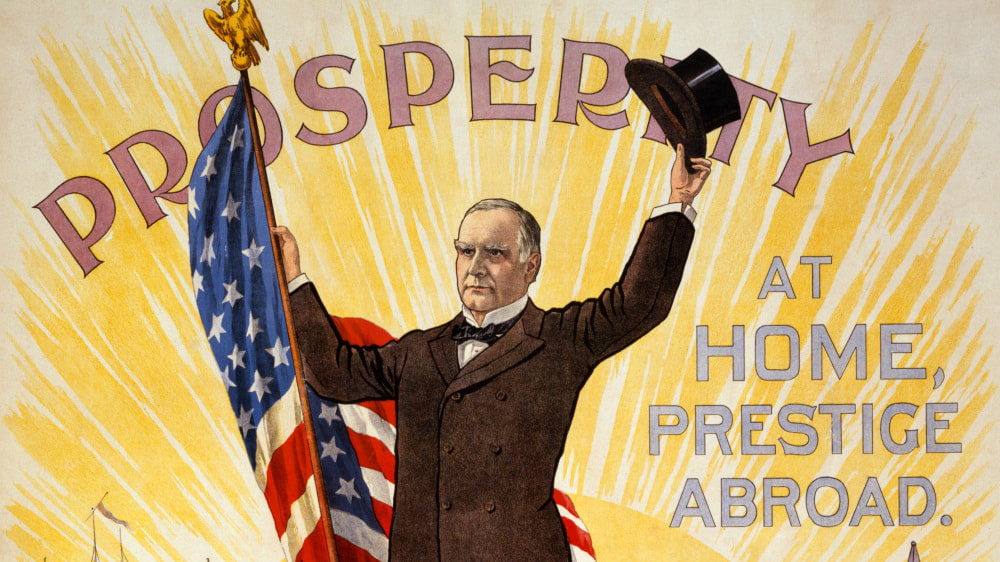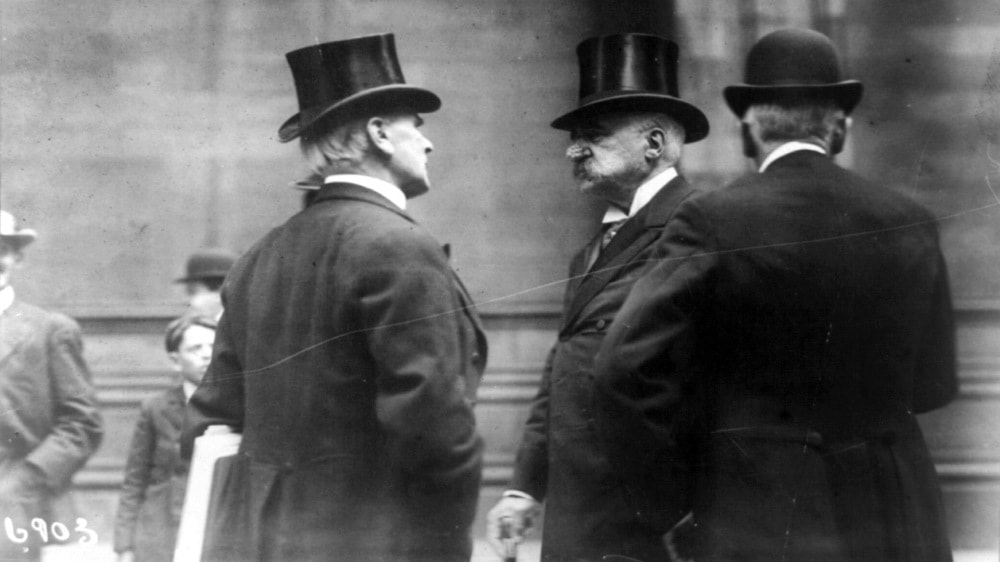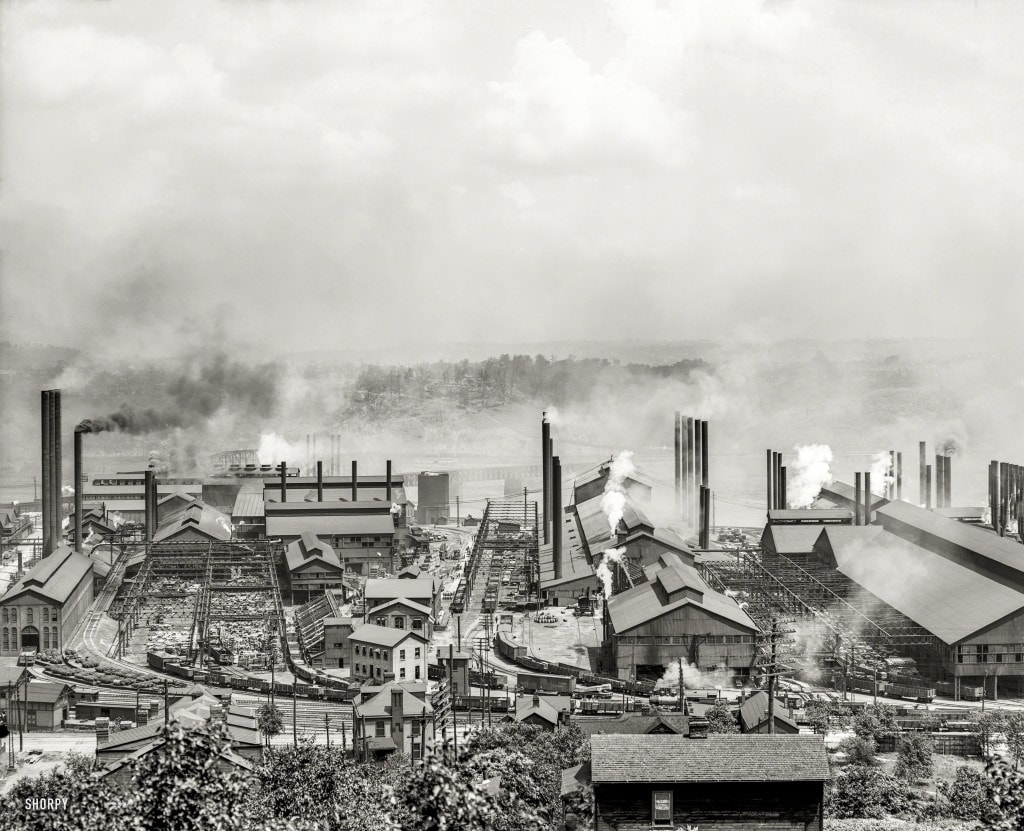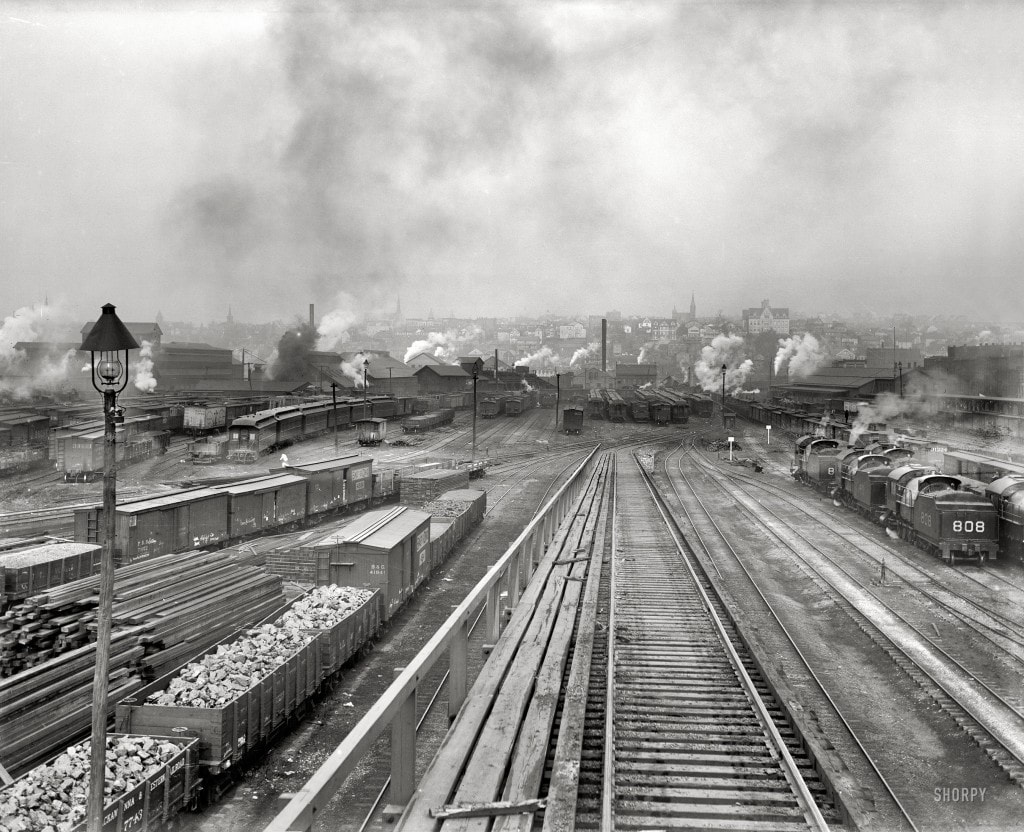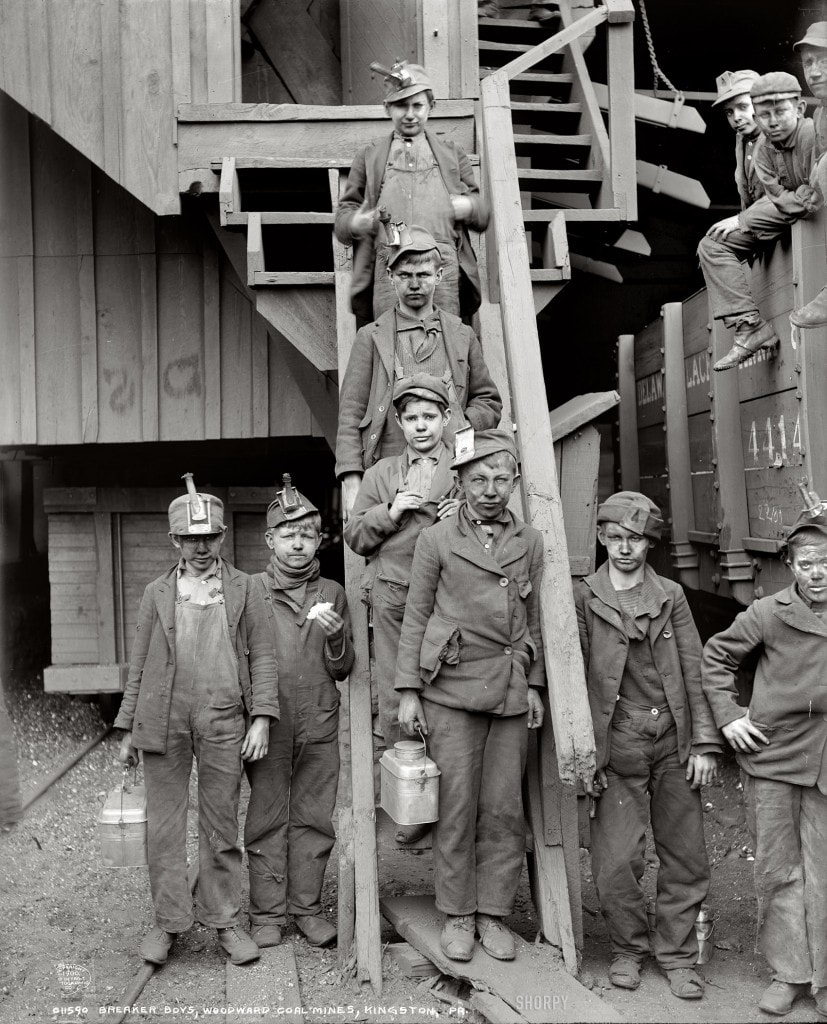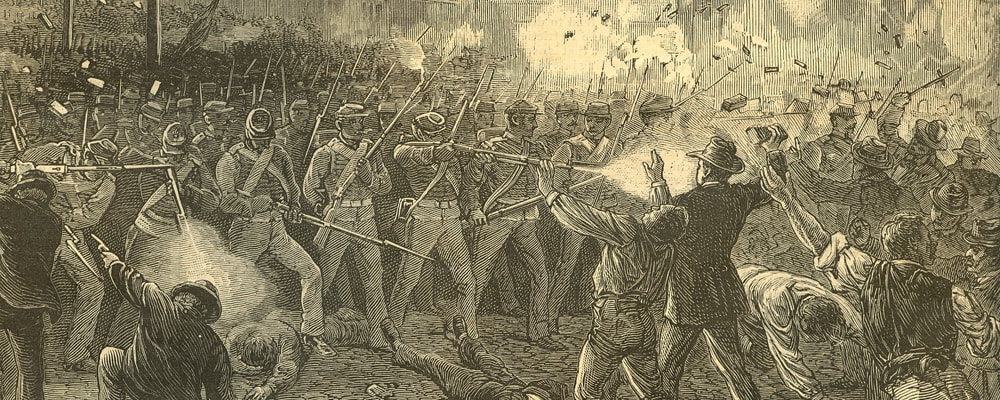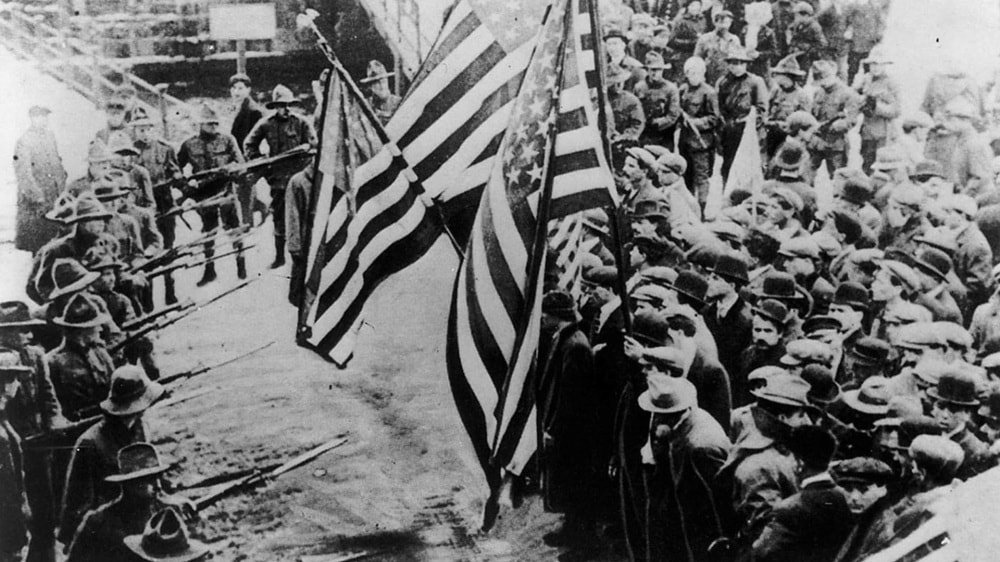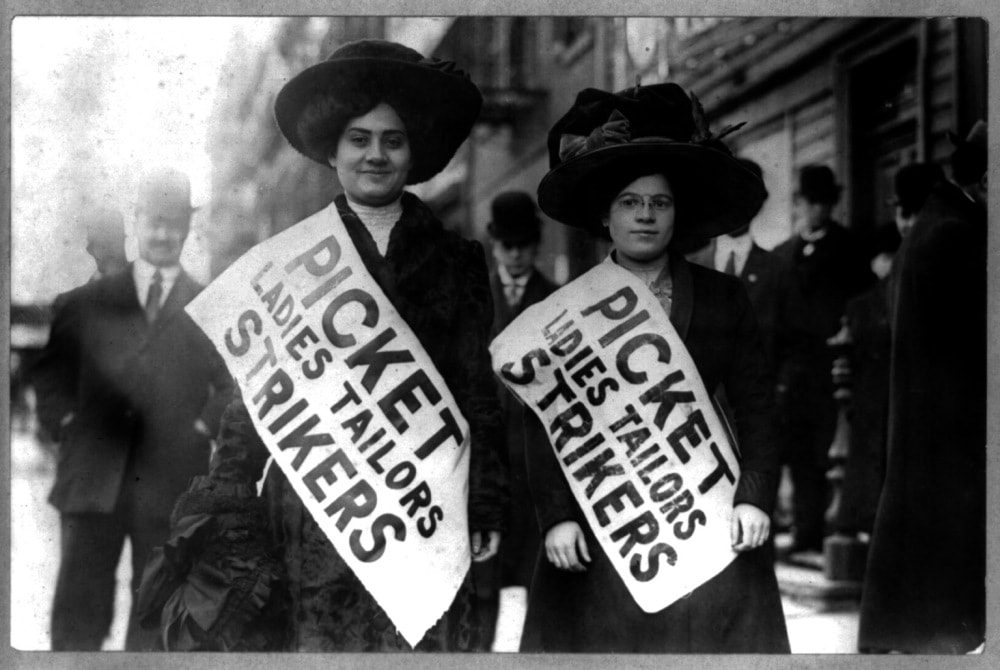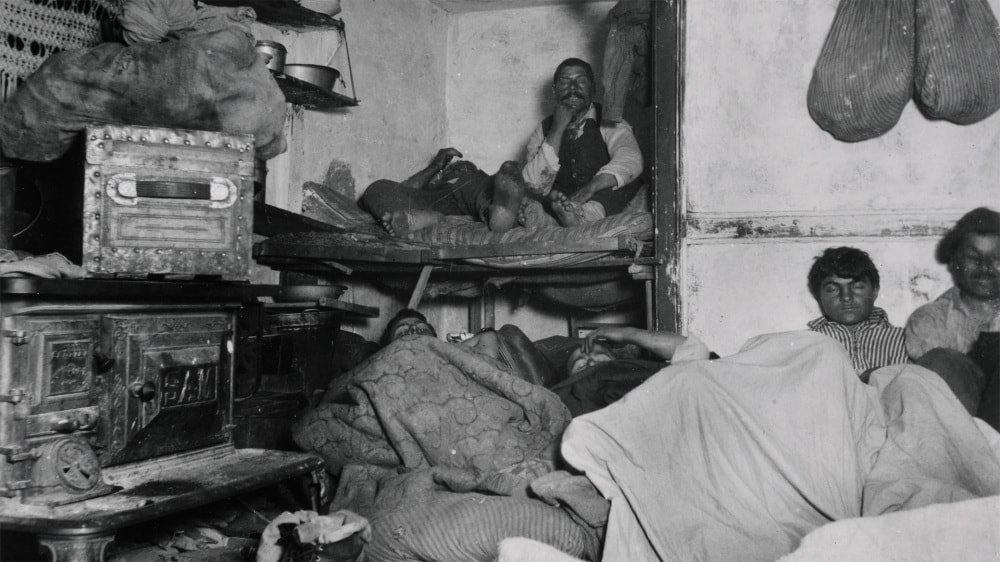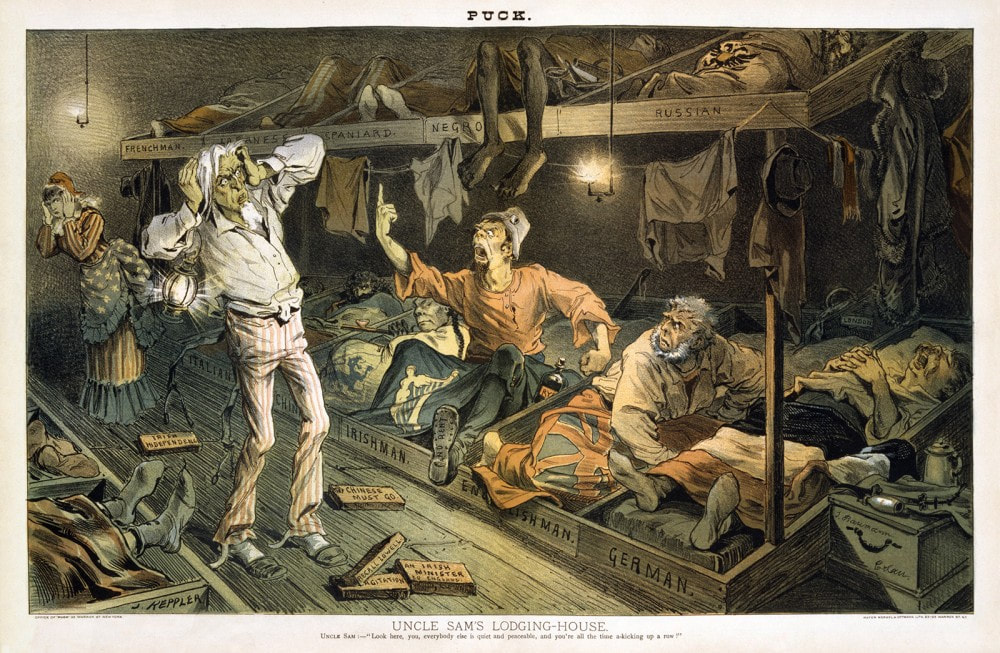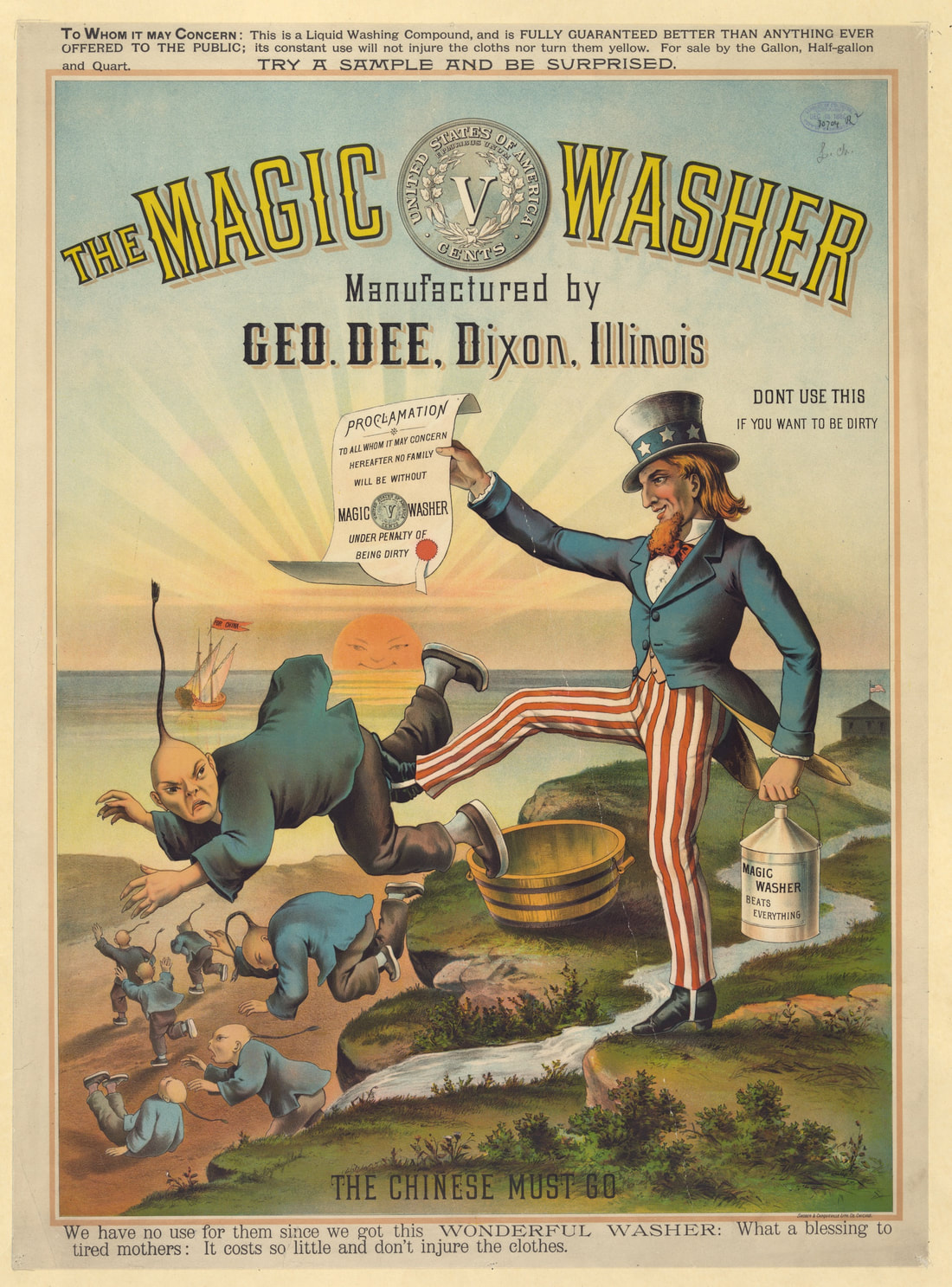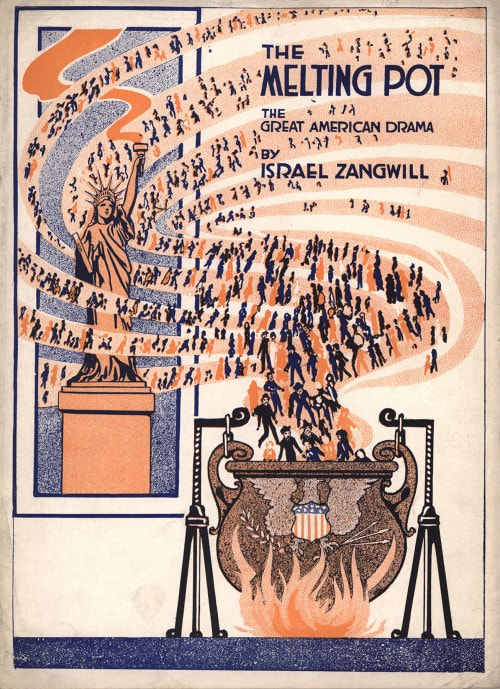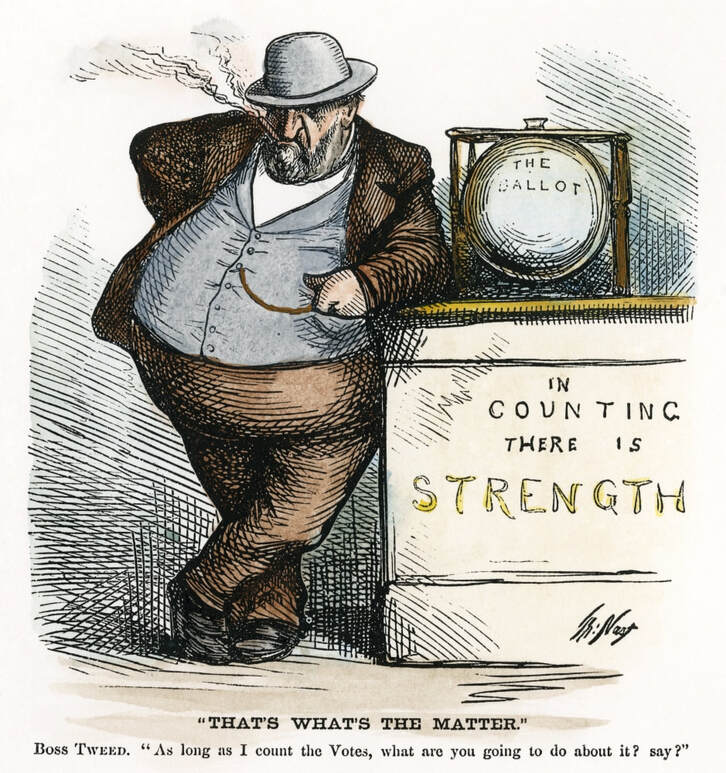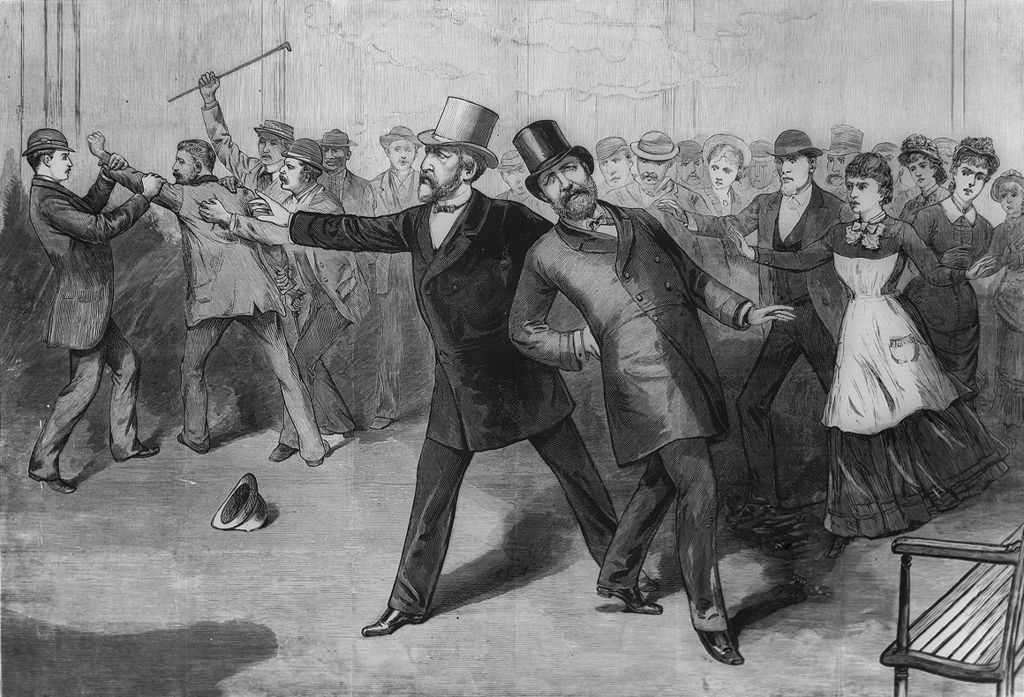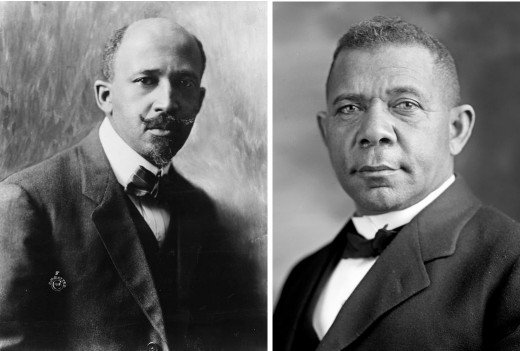The Gilded Age
1860s-1890s
Contents
The Gilded Age, 1860s-1890s
Native Americans
Tom Torlino, a member of the Navajo Nation, entered the Carlisle Indian School, a Native American boarding school founded by the United States government in 1879, on October 21, 1882 and departed on August 28, 1886. Torlino’s student file contained photographs from 1882 and 1885. Carlisle Indian School Digital Resource Center.
|
Native Americans Quizlet
|
The Battle of Little Big Horn in 1876, also known as Custer's Last Stand, was a major victory for Lakota Sioux, Northern Cheyenne, and Arapaho natives. The United States Army 7th Cavalry Regiment lost 268 of 700 men, inlcuding their commander, Lt. Col. George Armstrong Custer.
Article and video: Why We've Gotten 'Custer's Last Stand' Wrong for Nearly 150 Years
Burial of the dead after the massacre of Wounded Knee. U.S. Soldiers putting Indians in common grave; some corpses are frozen in different positions. South Dakota. 1891. Library of Congress.
Review:
- How did the pressures of westward expansion impact Native Americans?
Western Settlers
Cowboys like the one pictured here worked the drives that supplied Chicago and other mid-western cities with the necessary cattle to supply and help grow the meat-packing industry. Their work was obsolete by the turn of the century, yet their image lived on through vaudeville shows and films that romanticized life in the West. John C.H. Grabill, “The Cow Boy,” c. 1888. Library of Congress.
American frontierswoman and professional scout Martha Jane Canary was better known to America as Calamity Jane. A figure in western folklore during her life and after, Calamity Jane was a central character in many of the increasingly popular novels and films that romanticized western life in the twentieth century. “[Martha Canary, 1852-1903, (“Calamity Jane”), full-length portrait, seated with rifle as General Crook’s scout],” c. 1895. Library of Congress.
While bison supplied leather for America’s booming clothing industry, the skulls of the animals also provided a key ingredient in fertilizer. This 1870s photograph illustrates the massive number of bison killed for these and other reasons (including sport) in the second half of the nineteenth century. Photograph of a pile of American bison skulls waiting to be ground for fertilizer, 1870s. Wikimedia.
Buffalo Soldiers, the nickname given to African-American cavalrymen by the native Americans they fought, were the first peacetime all-black regiments in the regular United States army. These soldiers regularly confronted racial prejudice from other Army members and civilians, but were an essential part of American victories during the Indian Wars of the late nineteenth and early twentieth centuries. “[Buffalo soldiers of the 25th Infantry, some wearing buffalo robes, Ft. Keogh, Montana] / Chr. Barthelmess, photographer, Fort Keogh, Montana,” 1890. Library of Congress.
Railroads made the settlement and growth of the West possible. By the late nineteenth century, maps of the Midwest were filled with advertisements touting how quickly a traveler could traverse the country. The Environment and Society Portal, a digital project from the Rachel Carson Center for Environment and Society, a joint initiative of LMU Munich and the Deutsches Museum.
Review:
- What economic and social factors changed the West after the Civil War?
Populism
The banner of the first Texas Farmers’ Alliance. Source: N. A. Dunning (ed.), Farmers’ Alliance History and Agricultural Digest (Washington D.C.: Alliance Publishing Co., 1891), iv
Conservative William McKinley promised prosperity to ordinary Americans through his “sound money” initiative, a policy he ran on during his election campaigns in 1896 and again in 1900. This election poster touts McKinley’s gold standard policy as bringing “Prosperity at Home, Prestige Abroad.” “Prosperity at home, prestige abroad,” [between 1895 and 1900]. Library of Congress.
Review:
- What led to the rise of the Populist movement, and what effect did it have?
Industrial Growth
John Pierpont Morgan with two friends, ca.1907. Library of Congress, LC-USZ62-92327
Review:
- How did industrialization and new technology affect the economy and society?
- How did big business shape the American economy in the late 1800s and early 1900s?
Labor Movements
A Maryland National Guard unit fires upon strikers during the Great Railroad Strike of 1877. Harper’s Weekly, via Wikimedia
|
In 1912, The International Workers of the World (the IWW, or the “Wobblies”) organized textile workers in Lawrence and Lowell, Massachusetts. This photo shows strikers, carrying American flags, confronting strikebreakers and militia bayonets.
|
Two women strikers on picket line during the “Uprising of the 20,000”, garment workers strike, New York City, 1910. Library of Congress, LC-USZ62-49516 .
|
Review:
- How did the rise of labor unions shape relations among workers, big business, and government?
Urban Growth
“Five Cents a Spot,” unauthorized immigration lodgings in a Bayard Street tenement, New York City, ca.1890. Library of Congress, LC-USZ62-16348
Nativist sentiment intensified in the late nineteenth century as immigrants streamed into American cities. Uncle Sam’s Lodging House, published in 1882, conveys this anti-immigrant attitude, with caricatured representations of Europeans, Asians, and African Americans creating a chaotic scene. Wikimedia.
|
1886 advertisement depicting the U.S. Chinese Exclusion Act. The text reads "THE CHINESE MUST GO. We have no use for them since we got this WONDERFUL WASHER." Many Chinese immigrants ran laundries.
|
The idea of America as a “melting pot,” a metaphor common in today’s parlance, was a way of arguing for the ethnic assimilation of all immigrants into a nebulous “American” identity at the turn of the 20th century. A play of the same name premiered in 1908 to great acclaim, causing even the former president Theodore Roosevelt to tell the playwright, “That’s a great play, Mr. Zangwill, that’s a great play.” Cover of Theater Programme for Israel Zangwill’s play “The Melting Pot”, 1916. Wikimedia.
|
Review:
- Why did immigrants come to the United States, and what impact did they have upon society?
- What urban challenges did city dwellers face, and how did they meet them?
- What luxuries did cities offer to the middle class?
Political Corruption
Cartoonist Thomas Nast was critical of the corrupt politician William Tweed who dominated New York City politics.
|
Political Corruption Quizlet
|
An engraving of James A. Garfield's assassination, published in Frank Leslie's Illustrated Newspaper. The caption reads "Washington, D.C.—The attack on the President's life—Scene in the ladies' room of the Baltimore and Ohio Railroad depot—The arrest of the assassin / from sketches by our special artist's [sic] A. Berghaus and C. Upham." President Garfield is at center right, leaning after being shot. He is supported by Secretary of State James G. Blaine who wears a light colored top hat. To left, assassin Charles Guiteau is restrained by members of the crowd, one of whom is about to strike him with a cane.
Review:
- What forms of political corruption were common during the Gilded Age?
- Why did presidents often have less political influence than Congress during the Gilded Age?
Jim Crow
This photograph captures the lynching of Laura and Lawrence Nelson, a mother and son, on May 25, 1911, in Okemah, Oklahoma. In response to national attention, the local white newspaper in Okemah simply wrote, “While the general sentiment is adverse to the method, it is generally thought that the negroes got what would have been due them under due process of law.” Wikimedia.
“We refuse to allow the impression to remain that the Negro-American assents to inferiority, is submissive under oppression and apologetic before insults. . . . Any discrimination based simply on race or color is barbarous, we care not how hallowed it be by custom, expediency or prejudice . . . discriminations based simply and solely on physical peculiarities, place of birth, color of skin, are relics of that unreasoning human savagery of which the world is and ought to be thoroughly ashamed. . . . Persistent manly agitation is the way to liberty.” |
W.E.B. Du Bois and Booker T. Washington were the most prominent African American leaders during the era of Jim Crow laws.
|
Review:
- What social and political setbacks did African Americans experience following the end of Reconstruction?
- How did African American leaders respond to new forms of segregation and discrimination?
Dawn of the 20th Century
Review:
- How did technology reshape daily life during the closing years of the 19th century?
Assignments and Readings
|
|
Your browser does not support viewing this document. Click here to download the document.
| ||||||
|
|
Your browser does not support viewing this document. Click here to download the document.
| ||||||
|
|
Your browser does not support viewing this document. Click here to download the document.
| ||||||
|
|
Your browser does not support viewing this document. Click here to download the document.
| ||||||
When Jim Crow Drank Coke
Your browser does not support viewing this document. Click here to download the document.
| when_jim_crow_drank_coke.pdf | |
| File Size: | 110 kb |
| File Type: | |
The Lost History of an American Coup D'Etat
Your browser does not support viewing this document. Click here to download the document.
| the_lost_history_of_an_american_coup_d’État.pdf | |
| File Size: | 230 kb |
| File Type: | |
Carnegie
| carnegie.pdf | |
| File Size: | 1301 kb |
| File Type: | |
Theory of the Leisure Class
| excerpts_from_theory_of_the_leisure_class_by_thorstein_veblen.pdf | |
| File Size: | 154 kb |
| File Type: | |
Haymarket Riot
| haymarket_riot.pdf | |
| File Size: | 909 kb |
| File Type: | |
Labor Movement
| labor_movement.pdf | |
| File Size: | 1954 kb |
| File Type: | |
Labor Unions
| labor_unions.pdf | |
| File Size: | 337 kb |
| File Type: | |
Old and New Immigration
| old_and_new_immigration.pdf | |
| File Size: | 786 kb |
| File Type: | |
Vertical and Horizontal Integration
| vertical_and_horizontal_integration.pdf | |
| File Size: | 924 kb |
| File Type: | |
The Men Who Built America
| the_men_who_built_america.pdf | |
| File Size: | 120 kb |
| File Type: | |
Primary Sources
Chief Joseph on Indian Affairs (1877, 1879)
A branch of the Nez Percé tribe, from the Pacific Northwest, refused to be moved to a reservation and attempted to flee to Canada but were pursued by the U.S. Cavalry, attacked, and forced to return. The following is a transcript of Chief Joseph’s surrender, as recorded by Lieutenant Wood, Twenty-first Infantry, acting aide-de-camp and acting adjutant-general to General Oliver O. Howard, in 1877.
William T. Hornady on the Extermination of the American Bison (1889)
William T. Hornady, Superintendent of the National Zoological Park, wrote a detailed account of the near-extinction of the American bison in the late-nineteenth century.
Chester A. Arthur on American Indian Policy (1881)
The following is extracted from President Chester A. Arthur’s First Annual Message to Congress, delivered December 6, 1881.
Frederick Jackson Turner, “Significance of the Frontier in American History” (1893)
Perhaps the most influential essay by an American historian, Frederick Jackson Turner’s address to the American Historical Association on “The Significance of the Frontier in American History” defined for many Americans the relationship between the frontier and American culture and contemplated what might follow “the closing of the frontier.”
Frances Densmore and Mountain Chief (1916)
American anthropologist and ethnographer Frances Densmore records the Blackfoot chief Mountain Chief in 1916 for the Bureau of American Ethnology.
William Graham Sumner on Social Darwinism (ca.1880s)
William Graham Sumner, a sociologist at Yale University, penned several pieces associated with the philosophy of Social Darwinism. In the following, Sumner explains his vision of nature and liberty in a just society.
Henry George, Progress and Poverty, Selections (1879)
In 1879, the economist Henry George penned a massive bestseller exploring the contradictory rise of both rapid economic growth and crippling poverty.
Andrew Carnegie’s Gospel of Wealth (1889)
Andrew Carnegie, the American steel titan, explains his vision for the proper role of wealth in American society.
Grover Cleveland’s Veto of the Texas Seed Bill (1887)
Amid a crushing drought that devastated many Texas farmers, Grover Cleveland vetoed a bill designed to help farmers recover by supplying them with seed. In his veto message, Cleveland explained his vision of proper government.
The “Omaha Platform” of the People’s Party (1892)
In 1892, the People’s, or Populist, Party crafted a platform that indicted the corruptions of the Gilded Age and promised government policies to aid “the people.”
“The Tournament of Today” (1883)
“Print shows a jousting tournament between an oversized knight riding horse-shaped armor labeled “Monopoly” over a locomotive, with a long plume labeled “Arrogance”, and carrying a shield labeled “Corruption of the Legislature” and a lance labeled “Subsidized Press”, and a barefoot man labeled “Labor” riding an emaciated horse labeled “Poverty”, and carrying a sledgehammer labeled “Strike”. On the left is seating “Reserved for Capitalists” where Cyrus W. Field, William H. Vanderbilt, John Roach, Jay Gould, and Russell Sage are sitting. On the right, behind the labor section, are telegraph lines flying monopoly banners that are labeled “Wall St., W.U.T. Co., [and] N.Y.C. RR”.”
A branch of the Nez Percé tribe, from the Pacific Northwest, refused to be moved to a reservation and attempted to flee to Canada but were pursued by the U.S. Cavalry, attacked, and forced to return. The following is a transcript of Chief Joseph’s surrender, as recorded by Lieutenant Wood, Twenty-first Infantry, acting aide-de-camp and acting adjutant-general to General Oliver O. Howard, in 1877.
William T. Hornady on the Extermination of the American Bison (1889)
William T. Hornady, Superintendent of the National Zoological Park, wrote a detailed account of the near-extinction of the American bison in the late-nineteenth century.
Chester A. Arthur on American Indian Policy (1881)
The following is extracted from President Chester A. Arthur’s First Annual Message to Congress, delivered December 6, 1881.
Frederick Jackson Turner, “Significance of the Frontier in American History” (1893)
Perhaps the most influential essay by an American historian, Frederick Jackson Turner’s address to the American Historical Association on “The Significance of the Frontier in American History” defined for many Americans the relationship between the frontier and American culture and contemplated what might follow “the closing of the frontier.”
Frances Densmore and Mountain Chief (1916)
American anthropologist and ethnographer Frances Densmore records the Blackfoot chief Mountain Chief in 1916 for the Bureau of American Ethnology.
William Graham Sumner on Social Darwinism (ca.1880s)
William Graham Sumner, a sociologist at Yale University, penned several pieces associated with the philosophy of Social Darwinism. In the following, Sumner explains his vision of nature and liberty in a just society.
Henry George, Progress and Poverty, Selections (1879)
In 1879, the economist Henry George penned a massive bestseller exploring the contradictory rise of both rapid economic growth and crippling poverty.
Andrew Carnegie’s Gospel of Wealth (1889)
Andrew Carnegie, the American steel titan, explains his vision for the proper role of wealth in American society.
Grover Cleveland’s Veto of the Texas Seed Bill (1887)
Amid a crushing drought that devastated many Texas farmers, Grover Cleveland vetoed a bill designed to help farmers recover by supplying them with seed. In his veto message, Cleveland explained his vision of proper government.
The “Omaha Platform” of the People’s Party (1892)
In 1892, the People’s, or Populist, Party crafted a platform that indicted the corruptions of the Gilded Age and promised government policies to aid “the people.”
“The Tournament of Today” (1883)
“Print shows a jousting tournament between an oversized knight riding horse-shaped armor labeled “Monopoly” over a locomotive, with a long plume labeled “Arrogance”, and carrying a shield labeled “Corruption of the Legislature” and a lance labeled “Subsidized Press”, and a barefoot man labeled “Labor” riding an emaciated horse labeled “Poverty”, and carrying a sledgehammer labeled “Strike”. On the left is seating “Reserved for Capitalists” where Cyrus W. Field, William H. Vanderbilt, John Roach, Jay Gould, and Russell Sage are sitting. On the right, behind the labor section, are telegraph lines flying monopoly banners that are labeled “Wall St., W.U.T. Co., [and] N.Y.C. RR”.”
Slideshows
Videos
|
|
|
|
|
|
Digital History Textbook
Closing the Western Frontier
In 1860, most Americans considered the Great Plains the “Great American Desert.” Settlement west of Minnesota, Iowa, Missouri, Arkansas, and Lousiana averaged just 1 person per square mile. The only parts of the Far West that were highly settled were California and Texas. Between 1865 and the 1890s, however, Americans settled 430 million acres in the Far West--more land than during the preceding 250 years of American history.By 1893, the Census Bureau was able to claim that the entire western frontier was now occupied.The discovery of gold, silver, and other precious minerals in California in 1849, in Nevada and Colorado in the 1850s, in Idaho and Montana in 1860s, and South Dakota in the 1870s sparked an influx of prospectors and miners. The expansion of railroads and the invention of barbed wire and improvements in windmills and pumps attracted ranchers and farmers to the Great Plains in the 1860s and 1870s. This chapter examines the forces that drove Americans westward; the kinds of lives they established in the Far West; and the rise of the "West of the imagination," the popular myths that continue to exert a powerful hold on mass culture.
Building the Transcontinental Railroad
The Great American Desert
The Comstock Lode and the Mining Frontier
The Cattle Frontier
The Farming Frontier
Water and the West
Black Gold: The Oil Frontier
Closing the American Frontier
The West of the Imagination
Biography
Tragedy of the Plains Indians
The 250,000 Native Americans who lived on the Great Plains were confined onto reservations through renegotiation of treaties and 30 years of war. This chapter examines the consequences of America's westward movement for Native Americans.
A Thirty Years War
The Sand Creek Massacre
The Battle of the Little Big Horn
Nez Perce
Wounded Knee I
Wounded Knee II
Kill the Indian and Save the Man
Native Americans at the Turn of the Century
The Political Crisis of the 1890s
The 1880s and 1890s were years of turbulence. Disputes erupted over labor relations, currency, tariffs, patronage, and railroads The most momentous political conflict of the late 19th century was the farmers' revolt. Drought, plagues of grasshoppers, boll weevils, rising costs, falling prices, and high interest rates made it increasingly difficult to make a living as a farmer. Many farmers blamed railroad owners, grain elevator operators, land monopolists, commodity futures dealers, mortgage companies, merchants, bankers, and manufacturers of farm equipment for their plight. Farmers responded by organizing Granges, Farmers' Alliances, and the Populist party. In the election of 1896, the Populists and the Democrats nominated William Jennings Bryan for president. Bryan 's decisive defeat inaugurated a period of Republican ascendancy, in which Republicans controlled the presidency for 24 of the next 32 years.
Panacea's for the Nation's Ills
Henry George
Looking Backward
William Hope Harvey
The Depression of the Mid-1890s
The Farmers' Plight
Populism
The Election of 1896
The Wonderful Wizard of Oz
The Populist Crusade and Restrictions on African Americans
The Gilded Age
The 1880s and 1890s were years of unprecedented technological innovation, mass immigration, and intense political partisanship, including disputes over currency, tariffs, political corruption and patronage, and railroads and business trusts.
A Distant Mirror: The Late Nineteenth Century
The Gilded Age
Government Retrenchment and Government Corruption
Politics During the Gilded Age
Civil Service Reform
Tweedledum and Tweedledee
The Election of 1884
The Tariff Question
Anti-Trust
Grover Cleveland
The Making of Modern America
The late 19th century saw the advent of new communication technologies, including the phonograph, the telephone, and radio; the rise of mass-circulation newspapers and magazines; the growth of commercialized entertainment, as well as new sports, including basketball, bicycling, and football, and appearance of new transportation technologies, such as the automobile, electric trains and trolleys.
The Wizard of Menlo Park
An Age of Innovation
The Birth of Modern Culture
The Revolt Against Victorianism
The Rise of Mass Communication
Commercialized Leisure
The University
Industrialization and the Working Class
This chapter examines the impact of and responses to industrialization among American workers, including the attempt to form labor unions despite strong opposition from many industrialists and the courts.
Labor in the Age of Industrialization
American Labor in Comparative Perspective
Sources of Worker Unrest
The Drive for Unionization
The Great Railroad Strike
The Molly Maguires
The Origins of American Trade Unionism
Haymarket Square
Samuel Gompers and the American Federation of Labor
Homestead
Pullman
Labor Day
The Murder of Former Idaho Governor Frank Steunenberg
Socialist and Radical Alternatives
Biographies
The Huddled Masses
Around the turn of the twentieth century, mass immigration from eastern and southern Europe dramatically altered the population's ethnic and religious composition. Unlike earlier immigrants, who had come from Britain, Canada, Germany, Ireland, and Scandinavia, the “new immigrants” came increasingly from Hungary, Italy, Poland, and Russia. The newcomers were often Catholic or Jewish and two-thirds of them settled in cities. In this chapter you will learn about the new immigrants and the anti-immigrant reaction.
The Statue of Liberty
Emma Lazarus
The New Immigrants
Birds of Passage
Chinese Exclusion Act
Angel Island
Japanese Immigration
Contract Labor
Immigration Restriction
Migration and Disease
The United States's Changing Face
Migration Today
Evaluating the Economic Costs and Benefits of Immigration
Migration as a Key Theme in U.S. and World History
Kinds of Migrants
The Stages of Migration
The Language of Cultural Mixture and Persistence
Music and Migration
Why Do People Migrate?
Who Migrates?
The Human Meaning of Migration
Language and Migration
Movies and Migration
Statue of Liberty Quiz
The Rise of Big Business
Between the Civil War and World War I, the modern American economy emerged. A national transportation and communication network was created, the corporation became the dominant form of business organization, and a managerial revolution transformed business operations. By the beginning of the twentieth century, per capita income and industrial production in the United States exceeded that of any other country except Britain.Unlike the pre-Civil War economy, this new one was dependent on raw materials from around the world and it sold goods in global markets. Business organization expanded in size and scale. There was an unparalleled increase in factory production, mechanization, and business consolidation. By the beginning of the twentieth century, the major sectors of the nation's economy--banking, manufacturing, meat packing, oil refining, railroads, and steel--were dominated by a small number of giant corporations.
J.P. Morgan
The Rise of Big Business
The Corporate Revolution
Why Business Grew
Corporations and the Law
The Debate Over Big Business
The Gospel of Wealth
Social Darwinism
Controlling the Shop Floor
Jay Gould
The Rise of the City
This chapter traces the changing nature of the American city in the late 19th century, the expansion of cities horizontally and vertically, the problems caused by urban growth, the depiction of cities in art and literature, and the emergence of new forms of urban entertainment.
The Great Chicago Fire of 1871
The Rise of the Modern City
The Skyscraper
Tenements
Boss Tweed
In 1860, most Americans considered the Great Plains the “Great American Desert.” Settlement west of Minnesota, Iowa, Missouri, Arkansas, and Lousiana averaged just 1 person per square mile. The only parts of the Far West that were highly settled were California and Texas. Between 1865 and the 1890s, however, Americans settled 430 million acres in the Far West--more land than during the preceding 250 years of American history.By 1893, the Census Bureau was able to claim that the entire western frontier was now occupied.The discovery of gold, silver, and other precious minerals in California in 1849, in Nevada and Colorado in the 1850s, in Idaho and Montana in 1860s, and South Dakota in the 1870s sparked an influx of prospectors and miners. The expansion of railroads and the invention of barbed wire and improvements in windmills and pumps attracted ranchers and farmers to the Great Plains in the 1860s and 1870s. This chapter examines the forces that drove Americans westward; the kinds of lives they established in the Far West; and the rise of the "West of the imagination," the popular myths that continue to exert a powerful hold on mass culture.
Building the Transcontinental Railroad
The Great American Desert
The Comstock Lode and the Mining Frontier
The Cattle Frontier
The Farming Frontier
Water and the West
Black Gold: The Oil Frontier
Closing the American Frontier
The West of the Imagination
Biography
Tragedy of the Plains Indians
The 250,000 Native Americans who lived on the Great Plains were confined onto reservations through renegotiation of treaties and 30 years of war. This chapter examines the consequences of America's westward movement for Native Americans.
A Thirty Years War
The Sand Creek Massacre
The Battle of the Little Big Horn
Nez Perce
Wounded Knee I
Wounded Knee II
Kill the Indian and Save the Man
Native Americans at the Turn of the Century
The Political Crisis of the 1890s
The 1880s and 1890s were years of turbulence. Disputes erupted over labor relations, currency, tariffs, patronage, and railroads The most momentous political conflict of the late 19th century was the farmers' revolt. Drought, plagues of grasshoppers, boll weevils, rising costs, falling prices, and high interest rates made it increasingly difficult to make a living as a farmer. Many farmers blamed railroad owners, grain elevator operators, land monopolists, commodity futures dealers, mortgage companies, merchants, bankers, and manufacturers of farm equipment for their plight. Farmers responded by organizing Granges, Farmers' Alliances, and the Populist party. In the election of 1896, the Populists and the Democrats nominated William Jennings Bryan for president. Bryan 's decisive defeat inaugurated a period of Republican ascendancy, in which Republicans controlled the presidency for 24 of the next 32 years.
Panacea's for the Nation's Ills
Henry George
Looking Backward
William Hope Harvey
The Depression of the Mid-1890s
The Farmers' Plight
Populism
The Election of 1896
The Wonderful Wizard of Oz
The Populist Crusade and Restrictions on African Americans
The Gilded Age
The 1880s and 1890s were years of unprecedented technological innovation, mass immigration, and intense political partisanship, including disputes over currency, tariffs, political corruption and patronage, and railroads and business trusts.
A Distant Mirror: The Late Nineteenth Century
The Gilded Age
Government Retrenchment and Government Corruption
Politics During the Gilded Age
Civil Service Reform
Tweedledum and Tweedledee
The Election of 1884
The Tariff Question
Anti-Trust
Grover Cleveland
The Making of Modern America
The late 19th century saw the advent of new communication technologies, including the phonograph, the telephone, and radio; the rise of mass-circulation newspapers and magazines; the growth of commercialized entertainment, as well as new sports, including basketball, bicycling, and football, and appearance of new transportation technologies, such as the automobile, electric trains and trolleys.
The Wizard of Menlo Park
An Age of Innovation
The Birth of Modern Culture
The Revolt Against Victorianism
The Rise of Mass Communication
Commercialized Leisure
The University
Industrialization and the Working Class
This chapter examines the impact of and responses to industrialization among American workers, including the attempt to form labor unions despite strong opposition from many industrialists and the courts.
Labor in the Age of Industrialization
American Labor in Comparative Perspective
Sources of Worker Unrest
The Drive for Unionization
The Great Railroad Strike
The Molly Maguires
The Origins of American Trade Unionism
Haymarket Square
Samuel Gompers and the American Federation of Labor
Homestead
Pullman
Labor Day
The Murder of Former Idaho Governor Frank Steunenberg
Socialist and Radical Alternatives
Biographies
The Huddled Masses
Around the turn of the twentieth century, mass immigration from eastern and southern Europe dramatically altered the population's ethnic and religious composition. Unlike earlier immigrants, who had come from Britain, Canada, Germany, Ireland, and Scandinavia, the “new immigrants” came increasingly from Hungary, Italy, Poland, and Russia. The newcomers were often Catholic or Jewish and two-thirds of them settled in cities. In this chapter you will learn about the new immigrants and the anti-immigrant reaction.
The Statue of Liberty
Emma Lazarus
The New Immigrants
Birds of Passage
Chinese Exclusion Act
Angel Island
Japanese Immigration
Contract Labor
Immigration Restriction
Migration and Disease
The United States's Changing Face
Migration Today
Evaluating the Economic Costs and Benefits of Immigration
Migration as a Key Theme in U.S. and World History
Kinds of Migrants
The Stages of Migration
The Language of Cultural Mixture and Persistence
Music and Migration
Why Do People Migrate?
Who Migrates?
The Human Meaning of Migration
Language and Migration
Movies and Migration
Statue of Liberty Quiz
The Rise of Big Business
Between the Civil War and World War I, the modern American economy emerged. A national transportation and communication network was created, the corporation became the dominant form of business organization, and a managerial revolution transformed business operations. By the beginning of the twentieth century, per capita income and industrial production in the United States exceeded that of any other country except Britain.Unlike the pre-Civil War economy, this new one was dependent on raw materials from around the world and it sold goods in global markets. Business organization expanded in size and scale. There was an unparalleled increase in factory production, mechanization, and business consolidation. By the beginning of the twentieth century, the major sectors of the nation's economy--banking, manufacturing, meat packing, oil refining, railroads, and steel--were dominated by a small number of giant corporations.
J.P. Morgan
The Rise of Big Business
The Corporate Revolution
Why Business Grew
Corporations and the Law
The Debate Over Big Business
The Gospel of Wealth
Social Darwinism
Controlling the Shop Floor
Jay Gould
The Rise of the City
This chapter traces the changing nature of the American city in the late 19th century, the expansion of cities horizontally and vertically, the problems caused by urban growth, the depiction of cities in art and literature, and the emergence of new forms of urban entertainment.
The Great Chicago Fire of 1871
The Rise of the Modern City
The Skyscraper
Tenements
Boss Tweed
